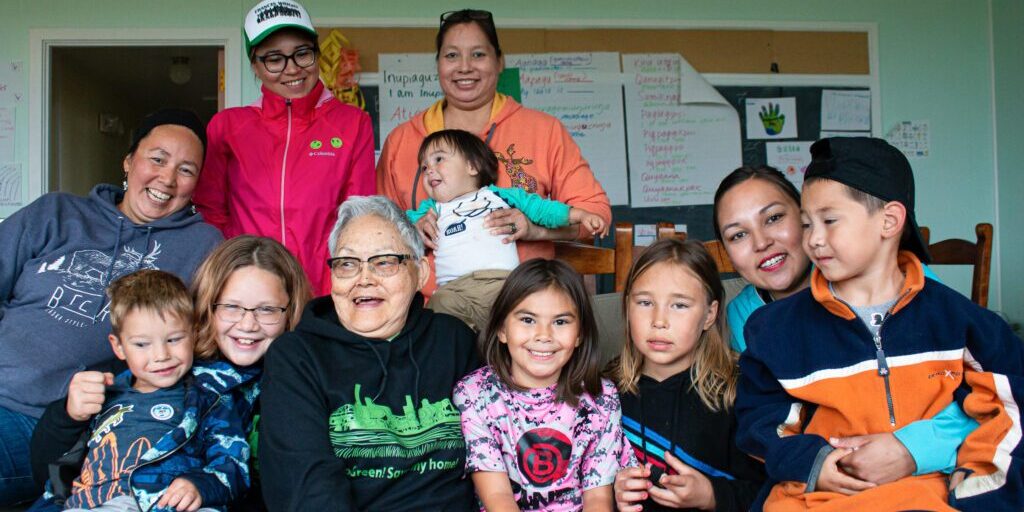“We all want the same thing. We want to become a community again. We want to live here; we want our youth to know exactly where we’re from instead of just one word: ‘Solomon.’”
That’s Deilah Johnson, a young woman from Solomon, a seasonal, historic community about an hour’s drive east of Nome.
She wears many hats for her home village: Grant Coordinator, Environmental Coordinator, Tribal Member, and former member of the Youth Tribal Council. This year, she also ran a week-long camp that aims to bring youth and elders from the community together.
Solomon’s residents face a sort of mini diaspora. The school closed in 1956, and the subsequent loss of resources has since led many to move away, whether to Nome, other villages, or further south. No one has lived in the village permanently since the early 2000s. But, Johnson says,
“If you talk to most of the adults here, everyone would like to move back, because this is their home.”

There are many hurdles to making Solomon a viable town again, but tribal leaders put great hope in the next generation. The campers are between five and fourteen years old and have a weeklong chance to experience Solomon through stories and experiences from generations past.
“We have kids from Oregon, Washington, Kenai, and Chugiak here. Their grandparents lived here — and they hear stories about it,” explains Helen Bohne, who previously ran the camp. Grandparents’ stories of subsistence become so much more real, she says, when the children can do the same things, in the same place their ancestors did them. Johnson agrees:
“Last year, we had kids from Colorado who had never been to Solomon, ever. It’s a way to unite our tribe and to keep our traditions and our culture alive.”
The camp is held at the seasonal Solomon Bed and Breakfast, which a half-century ago was the one-room schoolhouse. One of the elders attending this year’s camp is Helen Larsen, Deilah Johnson’s grandmother. Larsen was herself a student at the Solomon school — in the same building the camp is held — in the early 1950s.
Larsen says her parents never taught her to speak Inupiaq. Back then, Alaska Native school children were discouraged or outright forbidden from speaking their own languages by teachers and other authority figures. “They used to get slapped on their hand if they talked in their language, but that was the only language they knew then,” she says. For her, the Solomon camp is a chance to strengthen her Inupiaq skills right alongside the youth. Her latest assignment? Learning to write an Inupiaq version of “Twinkle, Twinkle, Little Star.”
Making Solomon a permanent village again won’t happen overnight. The lack of a comprehensive power grid, for example, means attendees at the youth and elder camp use a stationary bicycle to generate power to charge smartphones and other electronics.
There is also widespread erosion that’s worsening with time. “Everything has been sinking,” Deilah Johnson summarizes, including the land under parts of the campsite as well as the hillside near the local cemetery, which has been “inching closer and closer” to the gravesites in recent years. Speaking bluntly, Johnson says the worst-case scenario would be “losing coffins down the hill.”

In true Western Alaska fashion, the Solomon community is determined to preserve their ancestral home and fill it with meaning for future generations. Returning to live in Solomon year-round, and reclaiming city status, will be an involved, multi-year process. In Solomon, local leaders begin by teaching their children where they come from: one Inupiaq lesson at a time.
Top image: Helen Larsen (elder, seated front row, third from left) was a student at the Solomon school, which was operated by the Bureau of Indian Affairs (BIA) until 1956; she’s pictured here with her extended family. Photo: JoJo Phillips.






